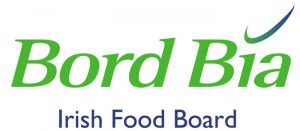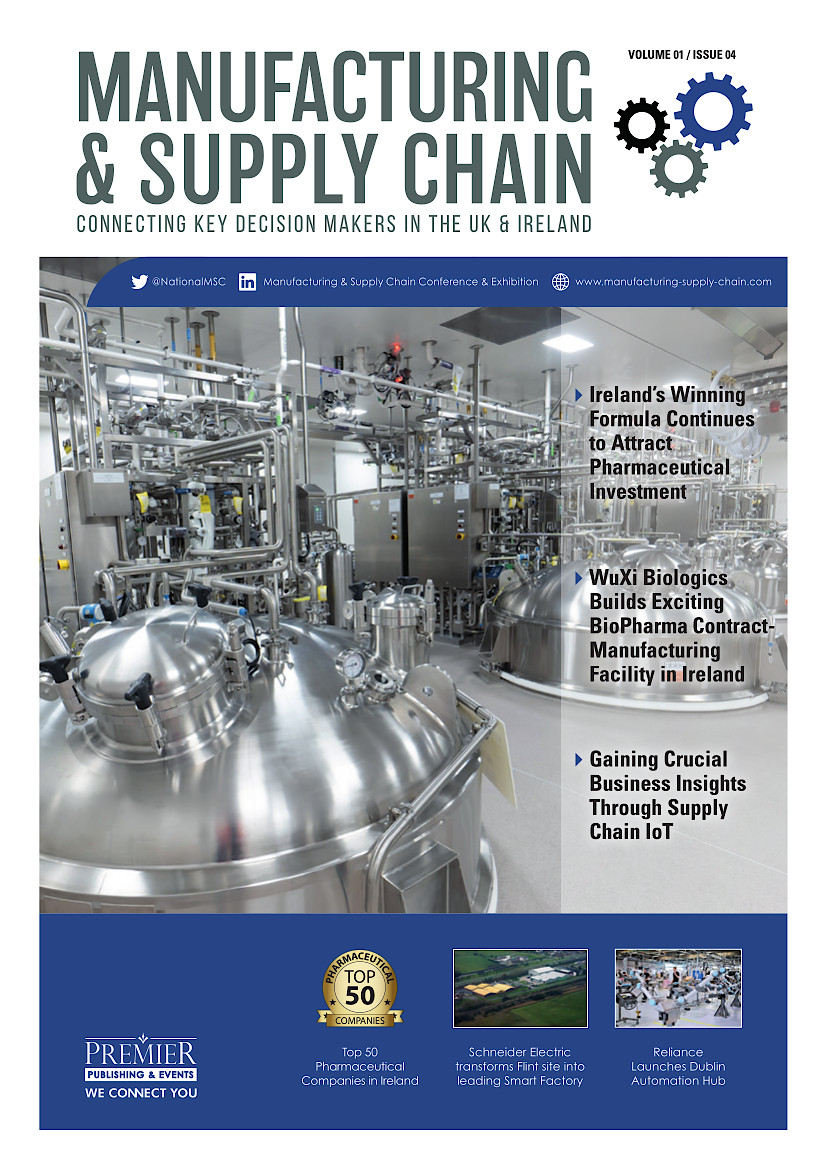Irish Food and Drink Exports Enjoyed a Record Year as Value of Sales Up 4% to €13.5 billion in 2021

The value of Ireland’s food, drink and horticulture exports increased by 4% to a record €13.5 billion in 2021, despite the impact of Covid-19 and Brexit on trading. Ireland exported the equivalent of almost €37 million worth of food and drink every day last year to customers in more than 180 countries worldwide, according to new data from Bord Bia’s Export Performance and Prospects report 2021/2022.
Ireland exports about 90% of its food and drink production and the performance of the export sector was robust in 2021, given the ongoing Covid-19 pandemic and the fact that the UK is now operating outside of the EU Customs Union. The value of Irish food and drink exports was 2% higher than pre-pandemic levels in 2019.
The dairy sector, which was worth more than €5 billion last year, remains the largest element within Irish food and drink exports, followed by meat and livestock, which generated over €3.5 billion in export sales, and prepared consumer foods, which was worth more than €2.5 billion.
Bord Bia has also published ambitious new three-year targets today to further contribute to the growth in the value-chain of Irish food and drink exports as part of the launch of its new 10-year Statement of Strategy. The plan envisages a significant expansion in the value growth of Irish food and drinks exports during the period, including an 11% increase in the value of dairy, meat, and livestock exports, and a 14% jump in prepared consumer food exports.
 Sustainability is a core theme within the new strategy, as Bord Bia strengthens its supports and standards to reflect the high level of ambition required to meet both environmental challenges and market demands. As highlighted in Food Vision 2030, Origin Green has been instrumental in monitoring and driving improvements in environmental sustainability and demonstrating this to trade customers and consumers, both at home and abroad. The challenges ahead are significant, but Origin Green provides a strong base from which to position Ireland as a global leader in sustainable food systems.
Sustainability is a core theme within the new strategy, as Bord Bia strengthens its supports and standards to reflect the high level of ambition required to meet both environmental challenges and market demands. As highlighted in Food Vision 2030, Origin Green has been instrumental in monitoring and driving improvements in environmental sustainability and demonstrating this to trade customers and consumers, both at home and abroad. The challenges ahead are significant, but Origin Green provides a strong base from which to position Ireland as a global leader in sustainable food systems.
Bord Bia Chief Executive Tara McCarthy said the industry’s performance had been extraordinary: “The sector’s ability to beat its 2019 performance and deliver a record year for Irish exports is truly impressive, and Irish food and drink producers and manufacturers deserve huge credit. While we understandably focus on the headline figures, it is worth remembering that within those billions and millions are businesses and farms in every county and indeed, almost every parish in the country. Businesses that, whether large or small, are run by people who have faced tremendous challenges over the past 20 months, both professional and personal. It is our privilege in Bord Bia to support these wonderful risk-takers, visionaries, and innovators.
Last year, we continued to work virtually for most of our activities, as we prioritised the safety of customers and employees and sought new ways to contribute to the growth in value of this country’s food, drink, and horticultural exports. We will continue to work with the Irish food industry and its customers this year.
Sustainability will continue to be a key focus for Bord Bia both this year and in the years ahead, as we work in partnership with the Irish food, drink, and horticulture industry to meet the Irish Government’s carbon reduction targets and sustainability challenges. The Government’s Food Vision 2030 strategy outlines the central role that Origin Green will play in supporting Ireland’s food sector in achieving Ireland’s environmental and sustainability goals. We look forward to helping Irish businesses to further embrace sustainability and ensure that Ireland continues to be acknowledged as a leader in sustainable food production.”
The Performance and Prospects 2021/2022 report was launched by the Minister for Agriculture, Food and the Marine, Charlie McConalogue, T.D. who said that Irish food and drink producers had enjoyed an excellent year. “Our world-class and globally-renowned food and drink sector continues to be one of the brightest shining lights of our economy. Given the difficult external factors, such as the Covid-19 pandemic and our nearest trading partner the UK moving outside the EU Customs Union, this really was an outstanding export performance by the food and drink sector, supported by Bord Bia. I pay tribute to our farmers, our fishers, and our food producers, as well as the processing and marketing sectors who drove this incredible performance.
Our food and drink producers continue to innovate and seek new markets for their products, and it is truly heartening to see such an impressive performance from Ireland’s largest indigenous industry.
Total agri-food exports, including non-edible products not included in Bord Bia’s report, are estimated by my Department to be worth €15.2 billion in 2021, compared to €14.3 billion the previous year.
This vital sector supports jobs in rural and urban communities throughout the country and my Department, along with the excellent team in Bord Bia both at home in Ireland and its overseas offices, will continue to work to support our primary food and drink producers and manufacturers as they face the challenges of the year ahead, and seek to further enhance the value of Irish exports.”
The Minister of State with special responsibility for Market Development, Martin Heydon, T.D. said: “Our continued focus on market development is an essential element of my Department’s work to assist the industry in dealing with the current challenges posed by Covid-19, the impact of Brexit, and changing consumer behaviour and preferences. We are focussed on nurturing the established markets close to home, while simultaneously identifying and investing in high potential emerging markets. In that context, I look forward to again working closely with Bord Bia on a targeted series of Trade Missions and market development and promotion events to our key markets during the next 12 months.”
Export Destinations
The medium-term impact of the sector’s strategy of diversification is further evidenced in this year’s data.
Last year, 34% of Ireland’s food and drink exports went to International markets outside the EU and the UK, while 33% went to the EU, and 33% to the UK. In 2016, 32% of exports went to International markets, 31% to the EU and 37% to the UK.
The EU was the largest single regional destination for Irish food, drink, and horticulture, as the value of exports increased by 2% to €4.5 billion last year. The value of exports to the UK was €4.4 billion last year, which was a very slight decline on the previous 12 months. Some categories saw a shift in exports to Northern Ireland rather than to Great Britain, due to a combination of serving new customers in NI and also partly as a route for onward shipment to northern parts of Britain.
The US market rebounded strongly, with export values up 22% to €1.3 billion driven by strong whiskey and liqueur sales. The value of exports to Africa grew by 12% to €918 million last year, while exports to South East Asia increased by 20% to exceed €500 million for the first time.
Outlook and Prospects for Irish Food and Drink Exports in 2022
Ms McCarthy said that the industry needed to be cognisant of a number of key trends for this year, which were a combination of emerging issues and a longer-term shift in consumer behaviour and attitudes.
“Notwithstanding last year’s record performance, there are a number of challenges ahead for the Irish food and drink sector. These include increased supply chain and input costs, which are affecting producers and processors, and the ongoing impact of Brexit, which has yet to be fully implemented. While the transition period ended on December 31, 2020, the UK has not yet started physical inspections of food and drink imports, and this is due to begin at the start of July.
“A tightening labour market has been reported by many companies in the agricultural and manufacturing sectors and this is driving increased costs, which it is proving very difficult for producers to recoup from customers.
“The increased focus on sustainability brings both challenges and opportunities for the food sector. Consumers want healthy natural food and Ireland can deliver on that demand, but we must also work collectively and collaboratively to reduce carbon emissions to meet our 2030 commitments, and to further embed sustainability within all production, manufacturing, and distribution activities.
“Our international research shows that 75% of consumers made efforts in the past year to buy more sustainably produced food. The Origin Green programme provides Irish exporters with that third party verified record that customers increasingly want. Last year, 71% of Origin Green companies, which are collectively responsible for the vast majority of Irish food and drink exports, said they believed Origin Green provided a competitive advantage for their business.”
Sectoral Analysis
Dairy
Irish dairy exports performed well in 2021, with the value of exports exceeding €5 billion for the third successive year. The combination of strong market returns across the main categories of butter, cheese, and powders, coupled with a diversified market mix underpinned overall exports. Strong demand in North America and Africa countered the dampening effect of softer demand for specialised infant nutrition products in Asia.
The diversification of the Irish dairy sector continued to pay dividends last year. Ireland exported dairy products to 147 markets during 2021 and for the first time, trade to countries other than the EU and the UK accounted for more than 50% of total exports.
Cheese exports increased by 15% and are now worth more than €1 billion per annum, which is the equivalent of €19 million per week. Customers were willing to pay higher prices for Irish cheese – not just in the established markets of the UK and EU – but also in Africa, particularly in North Africa.
The value of butter exports increased by 3% to €997 million. This increase was achieved despite a decline in exports to the UK, as EU demand was good and exports to the US continued to grow.
There was reduced demand for imported finished and base powders to Asia for the specialised infant nutrition sector. However, this was offset by the strong performance in ingredients for manufacturing to China and wider Asia, as well as increased exports of traditional dairy products.
Meat and Livestock
The total value of meat and livestock exports increased by 4% to €3.5 billion in 2021, which was a strong performance given the challenges of the year. Below the top-line growth, individual sectors experienced differing market trends, with strong demand and higher prices in beef and sheepmeat, and a weaker market for poultry and pigmeat. Meat and livestock exports were up 7% when compared to 2019.
Beef exports increased in value by 9% and were worth €2.1 billion during the year. This growth was underpinned by sustained strong demand and higher prices in the UK and EU markets. After a slow start in the first quarter, Irish exporters were able to work their way through the new trading realities with the UK, and volumes increased. The price environment was positive, due to a tightness of supply in the UK, and also in key EU markets.
The easing of Covid-19 related restrictions, particularly on the food service sector in the second half of the year helped generate strong demand. Ireland’s export values grew, despite an 11% year-on-year reduction in the volume of export. The strongest growth was to EU destinations which had a reduction in domestic beef availability.
The value of pigmeat exports decreased by 3% to €542 million, as lower pricing in international markets affected the industry. Export volumes increased by 3% to 248,000 tonnes in 2021, and the pattern of trade was influenced by market developments in Asia and the UK during the year.
Shipments of Irish pigmeat to Asia accounted for 67% of the total export value at €360 million, which is a 42% increase on 2020 levels. China is the main market for Irish pigmeat, but due to a slowdown in demand there, most of last year’s growth was driven by other Asian markets such as Japan, South Korea, and the Philippines.
Tighter global and EU supplies of sheepmeat, combined with stronger demand helped generate an extremely positive market for Irish sheepmeat in 2021. The value of sheepmeat exports increased strongly for the second consecutive year, rising by 15% to €420 million.
This strong growth in value came despite a 9% drop in export volumes. Irish exporters benefited from reduced sheepmeat exports from the UK into the EU and a decline in EU production. The reduced availability of imported sheepmeat in the EU market had a positive impact on the demand and opportunities for Irish sheepmeat. Lower export capacity in New Zealand, due to reduced production levels and a redirection of its product away from the EU meant there was less New Zealand lamb available in our key export markets.
Primary poultry exports fell by 15% to €128 million during 2021. This decline was due primarily to a fall in trade with the UK, which is Ireland’s major market for poultry. The value of poultry trade to the UK declined by 16% to €74 million last year, reflecting the sector’s high exposure to the foodservice market in the UK, which was significantly disrupted during the year.
European poultry exporters were negatively affected by market access restrictions last year, and progress around re-establishing these trading partnerships will be critical towards rebuilding export performance.
These developments were also reflected in overall EU poultry exports, which fell by 5% to 2.2 million tonnes in 2021. The principal markets that reduced import demand from EU suppliers included the Philippines, South Africa, Hong Kong, and the UK.
The value of Irish livestock exports increased by 6% to €214 million last year. Increased returns from live cattle exports helped to offset lower export values for both pigs and sheep.
Seafood
The value of primary seafood exports returned to growth last year, increasing by 6% to €485 million, albeit with varying trends across the sector.
Pelagic exporters experienced a difficult 2021, with a cut to the mackerel quota as a result of the EU-UK Trade and Cooperation Agreement. The value of pelagic exports for the year was down 1% to €169 million, helped by the strength of Asian markets. Shellfish exports were boosted by the reopening of foodservice channels in Europe and Asia during 2021. The value of shellfish exports increased by 25% to €165 million.
Freshwater seafood exports – the vast majority of which is salmon – had a challenging year, due to increased competition in certain markets. In overall terms, the value of exports declined by 8% to €98 million during 2021.
The whitefish export market was also challenging in 2021. Whitefish export values declined by about 15% to €40.6 million. Lower quotas for some whitefish species, greater consumption of whitefish on the domestic market, and difficult catching conditions all contributed to the overall reduction in 2021.
Horticulture and cereal
The value of Irish horticulture and cereal exports increased by 14% to €271 million in 2021. The main export products within this sector are mushrooms, primary cereals, and amenity horticulture.
This category is almost entirely dependent on the UK as a destination market. About 95% of horticulture exports went to the UK in 2021, which mirrored trade patterns in the previous year. Mushroom exports increased by 31% to €151 million last year.
The value of cereal exports was €61.8 million, which was a 9% increase year-on-year and a 23% jump compared to 2019. The value of amenity horticulture exports increased by 16% to €19.7 million.
Prepared Consumer Foods (PCF)
Prepared Consumer Foods (PCF) exports, (which includes consumer ready products, such as ready meals, pizzas, soups, and baked goods), increased by 3% in value terms last year to €2.5 billion. This performance reflected sustained strong sales across retail, most notably for the meal solutions category, but also for bread and for value added pigmeat. Foodservice closures due to the pandemic in the first half of the year continued to cause significant declines in the exports of processed cheese, value-added beef, and sweet bakery products.
This category, which comprises a wide range of consumer ready products, is highly dependent on the UK, with just over two-thirds of exports destined for that market.
The largest single element of this category is value-added meats, which were significantly affected by pandemic closures during 2020. Last year, as foodservice reopened, exports increased by 4% to €677 million.
PCF products that depend on retail had a positive year. The Meal Solutions subcategory – which includes pizzas, ready meals, and soups – increased its export value by 5% to a new record of €517 million.
Drinks
The value of drinks exports increased by 19% to €1.62 billion last, which was a strong recovery after the difficulties of 2020 and returned exports to 2019 levels. That recovery was most robust in Irish whiskey and cream liqueur exports, particularly notably to the US.
Whiskey exports were worth €855 million last year – up 25% compared to 2020. The growing trend of premiumisation and the position of Irish whiskey in this segment led to the value of Irish whiskey exports increasing at a stronger pace than volumes.
Not all categories within the drinks sector experienced the same levels of recovery. Overall beer exports were down by 3% to €246 million. Beer exports are more exposed to UK and EU markets and the closure of bars, and nightclubs in many markets had an impact. A recovery in beer exports is expected during the year, as these sectors reopen.
























